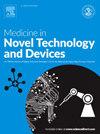丝素蛋白掺入对骨修复材料力学性能和成骨活性的影响
Q3 Medicine
引用次数: 0
摘要
丝素蛋白作为一种天然生物聚合物,以其优异的生物相容性、可降解性和独特的结构调节能力,在骨修复材料应用领域具有不可替代的价值。SF的掺入可以调节骨修复材料的各种性能。本文主要系统综述了SF掺入对各种骨修复材料力学性能和成骨活性的影响。在力学性能方面,SF通过β-片状晶体结构的形成和分子间的相互作用,极大地提高了材料的抗压强度、韧性和结构稳定性,有效解决了传统骨修复材料在骨组织工程中的应用局限性。同时,在成骨活性方面,SF可通过参与信号通路,促进间充质干细胞的粘附、增殖和分化,上调碱性磷酸酶、骨钙素等关键标志物的表达。特别是与陶瓷或金属种植体结合时,表现出良好的成骨能力。本文将为构建具有精密机械匹配和高效成骨诱导功能的复合骨修复材料提供理论框架,对促进骨组织工程材料的临床转化具有重要的指导意义。本文章由计算机程序翻译,如有差异,请以英文原文为准。
Effects of silk fibroin incorporation on the mechanical properties and osteogenic activity of bone repair materials
As a natural biopolymer, silk fibroin (SF) exhibits irreplaceable value in the field of bone repair materials applications due to its excellent biocompatibility, controllable degradability, and unique structure regulation ability. The incorporation of SF can regulate various properties of bone repair materials. This paper mainly systematically reviews the effects of SF incorporation on the mechanical properties and osteogenic activity of various bone repair materials. In terms of mechanical properties, SF highly enhances the compressive strength, toughness, and structural stability of materials through the formation of β-sheet crystal structures and intermolecular interactions, effectively addressing the application limitations of traditional bone repair materials in bone tissue engineering. Meanwhile, in terms of osteogenic activity, SF can promote the adhesion, proliferation, and differentiation of mesenchymal stem cells, upregulate the expression of key markers such as alkaline phosphatase and osteocalcin by participating in signaling pathways. Especially when combined with ceramics or metal implants, it demonstrates excellent osteogenic ability. This paper will provide a theoretical framework for the creation of composite bone repair materials with precise mechanical matching and efficient osteogenic induction functions, and it has important guiding significance for promoting the clinical translation of bone tissue engineering materials.
求助全文
通过发布文献求助,成功后即可免费获取论文全文。
去求助
来源期刊

Medicine in Novel Technology and Devices
Medicine-Medicine (miscellaneous)
CiteScore
3.00
自引率
0.00%
发文量
74
审稿时长
64 days
 求助内容:
求助内容: 应助结果提醒方式:
应助结果提醒方式:


